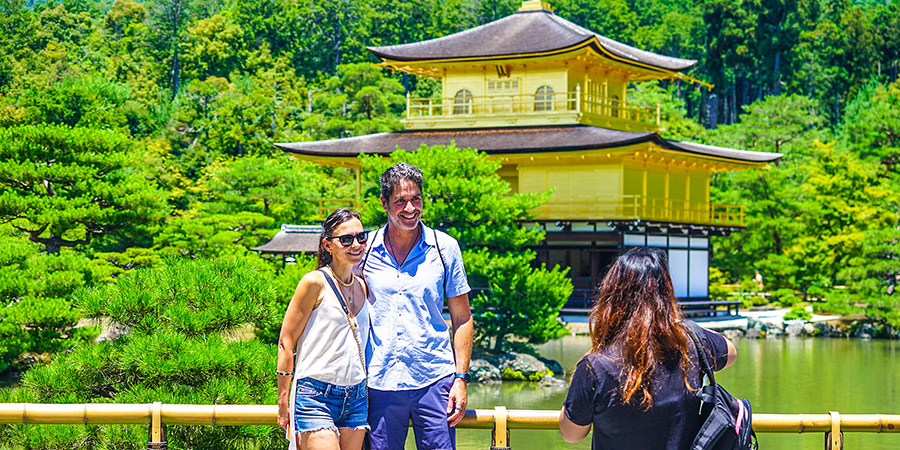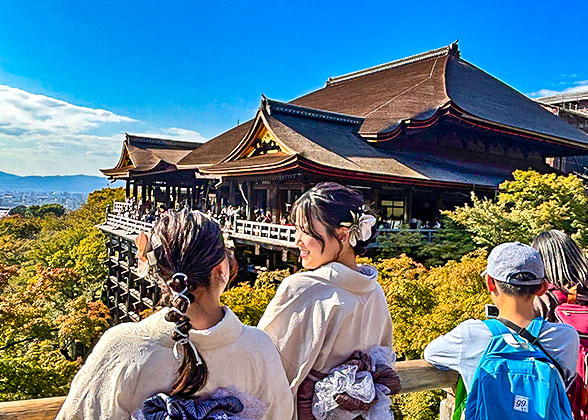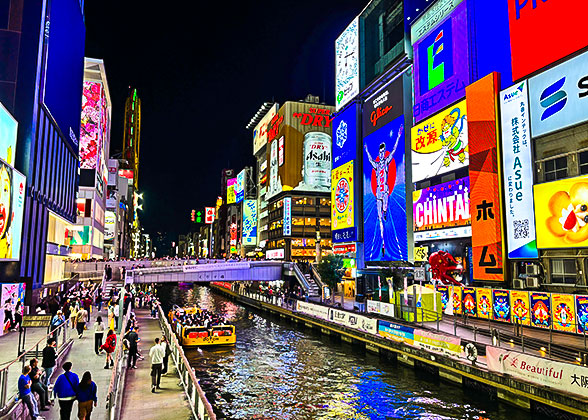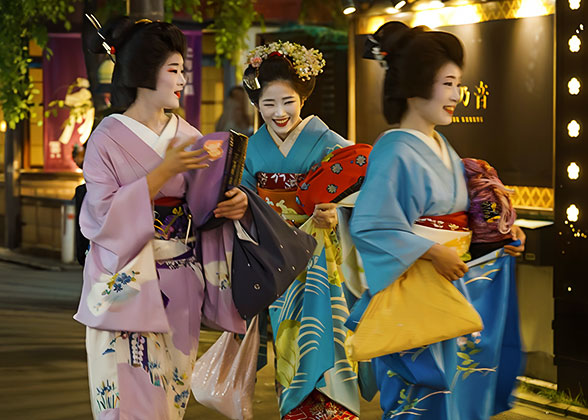Top Things to Do in Kyoto
Kyoto, once the capital of Japan for more than 1,000 years, owns the rich cultural heritage especially in respect of its numerous historical sites like Kiyomizu-dera Temple. There are too many things you must try in Kyoto, such as visiting the world-famous Kinkaku-ji Temple & watching Geisha show, and this article lists top 10 unmissable things about what to see & visit, as well as what to eat.1. Visit Kinkaku-ji Temple
Kinkaku-ji Temple is the most distinctive temple not only in Kyoto but also throughout Japan. Under sunlight, the pavilion covered with golden foil would reflect golden light, making it very eye-catching. In this temple, which has hundreds of years of history, there are also many scenic places to see, such as the Kyokochi pond, Ryumon-tak Waterfall, and stones resembling carp in the water. In addition, visitors can buy Japanese desserts decorated with golden foil in the temple's tea house.

Kinkaku-ji Temple
|
2. Stroll in Arashiyama’s Bamboo Forest

Arashiyama Bamboo Forest
|
3. Taste Kaiseki Cuisine
Kaiseki Cuisine is a traditional Japanese dinner, which is characterized by fresh ingredients and the delicated plating way the dishes are presented. Therefore, having Kaiseki Cuisine is an enjoyment both for your stomach and your eyes. Usually, a Kaiseki Cuisine consists of several dishes: soup, sashimi, simmered/grilled/fried food, pickles, rice, and desserts. This Cuisine is also special because of its changeable menu. In different seasons or months, you can taste different dishes for Kaiseki’s tenet: always choosing the seasonal ingredients.4. Experience Tea Ceremony & Taste Uji Matcha
Matcha is the byword for Uji, Kyoto. In Kyoto, you can drink authentic matcha tea and taste a variety of matcha desserts, such as matcha ice cream, jelly, and parfait. In addition to experiencing the deliciousness on your tongue tip, you can also learn about tea ceremony culture in Kyoto. Kneeling on the quiet Japanese room furnished with tatami, you would participate in the process of making a cup of matcha tea with the guidance of the host.5. Watch Geisha Performance in Gion
Geisha is like a shining star in Japanese culture. Geisha’s elegant makeup & costumes, the graceful dancing matched with the moving music can never be missed while traveling in Kyoto. To see Geisha's performance, Gion is the top choice for its status as the birthplace of Kabuki – traditional Japanese dancing and singing art. Strolling in the old street of Gion at night, sometimes you can see well-dressed Geisha or Maiko walking in a hurry. In addition, Gion also owns Japan’s most ancient Kabuki theatre - Minami-za where the wonderful performance would be like a visual feast. Besides that, Gion is also a bustling district where there are many Japanese restaurants, shops, and Izakaya Japanese bars. To learn more about geisha experience in Kyoto, please click Kyoto Geisha Experience or Kyoto Geisha Show Calendar.
|
|
|
6. Make a Wish in Kiyomizu-dera Temple
With more than 1,000 years of history, Kiyozimu-dera Temple is the most ancient temple in Kyoto and has ranked on the list of World Cultural Heritage. Here, you can see the amazing Kiyomizudera's veranda - the 13-meter-high (43 feet) wooden building without using one nail. On the ground before Kiyomizudera's veranda, the panorama of Kyoto City can be seen. As the film location of the anime Detective Canon, Kiyozimu Temple is known for making wishes under Otowa waterfall. Drinking the water flowing down from the 3 branch streams of the waterfall, you can pray for physical health, academic achievements, and a good marriage.
7. Take Photos with Senbon Torii in Fushimi Inari Taisha Shrine
Fushimi Inari Taisha Shrine is the head shrine of more than 30,000 Inari shrines in Japan. With about 1,000 years’ history, the Shrine is unique for its 10,000 red torii gates standing close on the mountain road. In the famous film Memoirs of a Geisha, the scene of the heroine walking past the red torii gate is filmed in Fushimi Inari Taisha Shrine. Also, the Shrine is filled with religious mystery. For example, you would see many fox sculptures while walking on the mountain road.

Fushimi Inari Taisha Shrine
|
8. Live in the Traditional Japanese Inn - Ryokan
Ryokan is a specialty in Japan. Different from modern western hotels, Ryokan is furnished with traditional Japanese furniture: plain tatamis, white-paper window, a wooden sliding door, and a low table. You would experience the daily life of Japanese people here. In addition, Ryokan is usually matched with a Japanese garden, an outdoor onsen, and Japanese dinner or breakfast. Soaking in the warm water of the onsen while appreciating the beauty in the garden would help you relieve the tiredness of traveling.9. Experience Local People’s Life in Nishiki Market
Since it is established about 1 hundred years ago, Nishiki Market has enjoyed the reputation as Kyoto’s Kitchen. In the Market, various specialties beloved by local people are sold, such as yuba, matcha, and sake. The 2 sides of the street are gathered by more than 100 shops and venders. Strolling here, you would feel your stomach and tongue greatly satisfied
|
|
|
10. Walk in the Ancient Street in Ninenzaka and Sannenzaka
Ninenzaka and Sannenzaka is a historical street where various crafts and street food are sold in the ancient wooden houses. Before leaving Kyoto, it is suitable to buy souvenirs or local specialties in Ninenzaka and Sannenzaka.




